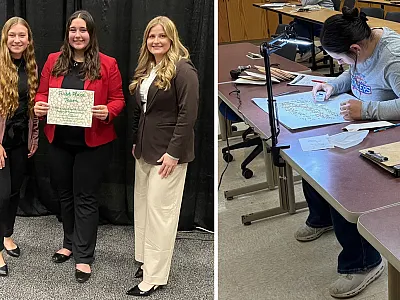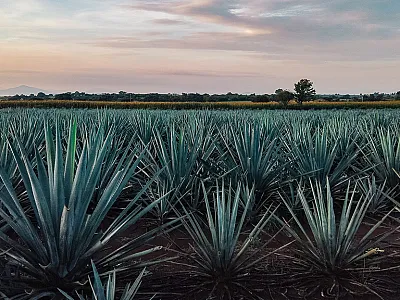Managing Plant-Parasitic Nematodes in Pacific Northwest Potatoes
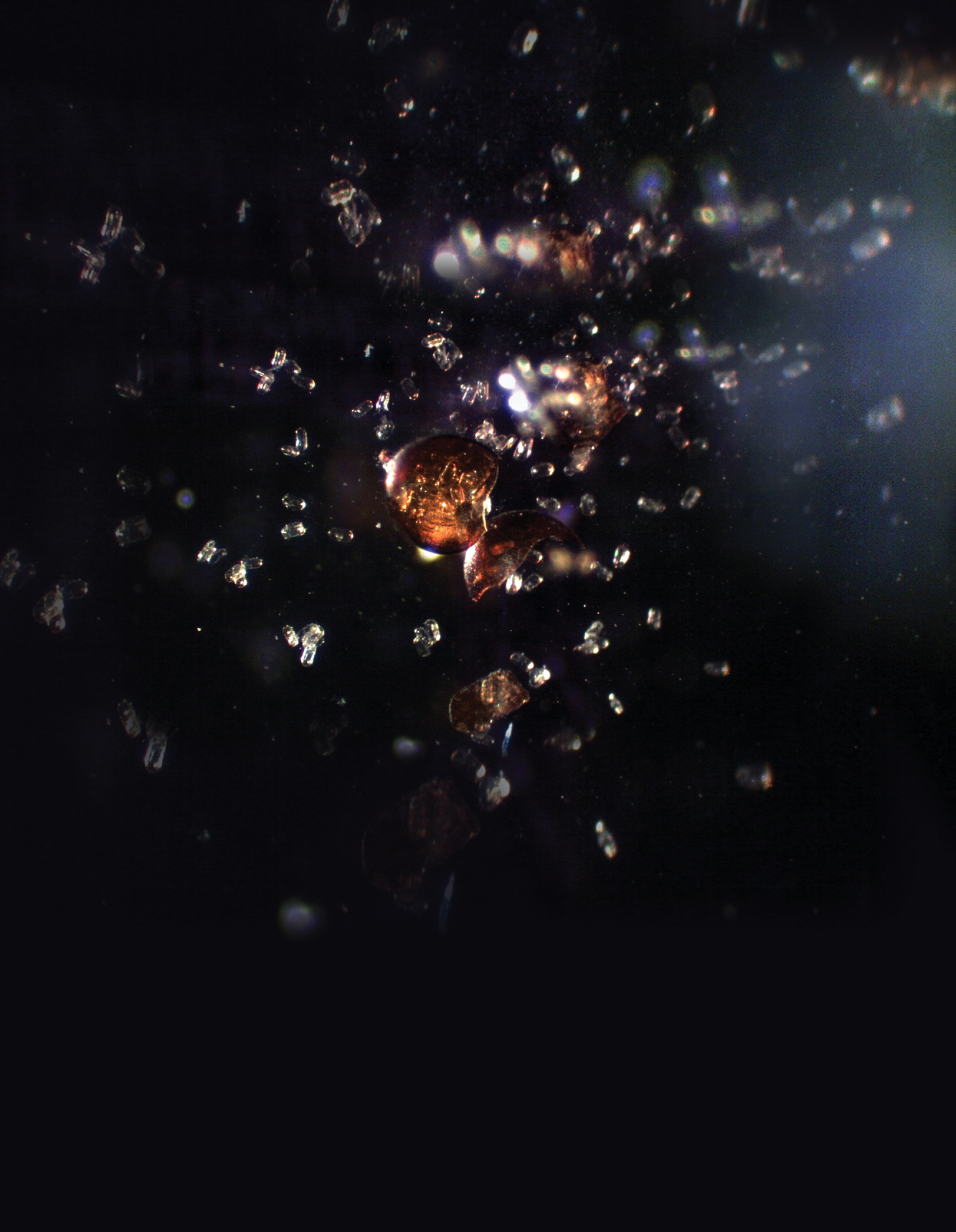

Several plant-parasitic nematode species are found in Pacific Northwest potato fields, and they can potentially cause agronomic damage alone or, in some cases, in conjunction with diseases. Because of interactions with other host crops and pathogens, not to mention fumigant costs, managing the soil-borne pests requires a combination that may include soil sampling, crop rotation, nematicides, fumigation, and biofumigation. Earn 1 CEU in Integrated Pest Management by reading this article and taking the quiz.
Potato growers and crop advisers in the Pacific Northwest who are seeking the Holy Grail of plant‐parasitic nematode control may be in for disappointment. Because of interactions with other host crops and pathogens, not to mention fumigant costs, managing the soil‐borne pests requires a combination that may include soil sampling, crop rotation, nematicides, fumigation, and biofumigation.
“It has to be a program approach and not one single thing,” says Dr. Saad Hafez, a University of Idaho nematologist based at the Parma Research and Extension Center. “It has to be a combination of crop rotation and chemical—it can’t be controlled with one thing. Before, it was very effective to use Telone II (1,3‐dicholopropene). Now the cost of Telone II is prohibitive, so you have to develop a program.”
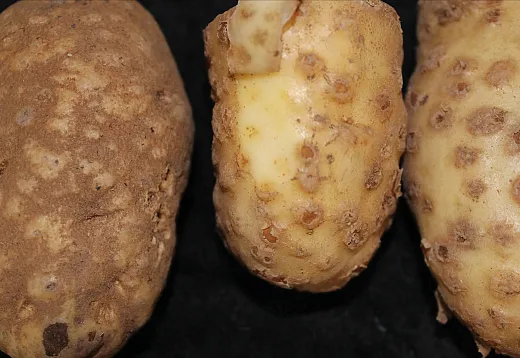
The soil‐applied fumigant metam sodium is a possible alternative, but it carries its own set of regulatory restrictions, including large buffers for water‐run chemigation. As a result, some growers have added biofumigation using specific brassica crops. When chopped and disked into the soil, the plant tissue breaks down, releasing volatile compounds that reduce nematodes and other soil‐borne pathogens, such as Verticillium.
In many cropping systems, planting resistant varieties is an integral part of a program approach. While breeders have released several white‐ and red‐skinned potato cultivars resistant to two golden nematode races found in New York, the same isn’t true for most plant‐plant parasitic nematode species in the Pacific Northwest. Despite ongoing efforts, breeders have yet to develop Russet Burbank‐type cultivars with desirable agronomic traits and resistance to pale cyst nematode, a USDA quarantine‐regulated pest, and root‐knot nematodes.
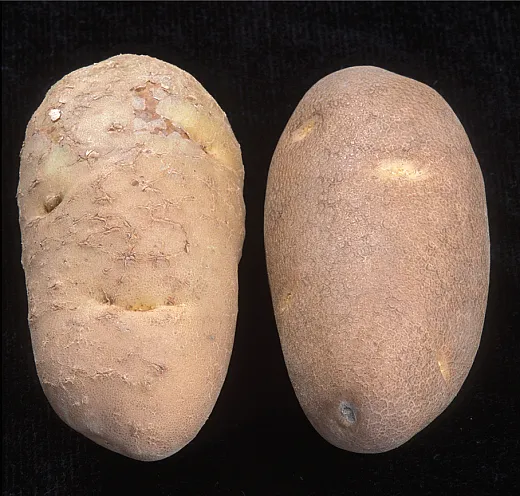
Funded by the USDA Specialty Crop Research Initiative program, an interdisciplinary multi‐state team of scientists with the four‐year Potatoes and Pests—Actionable Science Against Nematodes (PAPAS) research program hopes to change that. The project is focusing on potato cyst and root‐knot nematodes because these two pose the greatest economic threats to the U.S. potato industry, says Dr. Louise‐Marie Dandurand, a University of Idaho nematologist and PAPAS project director. The pale cyst nematode (Globodera pallida) and the golden nematode (Globodera rostochiensis), commonly known as potato cyst nematodes, are regulated pests found only in Idaho or New York, respectively.
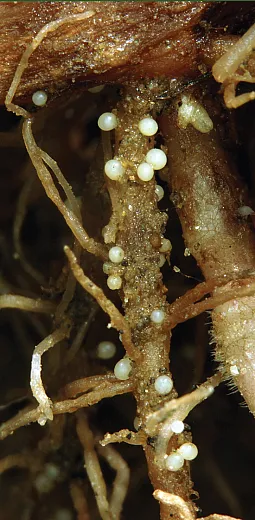
Among the goals of the project, which started in September 2022, are:
- Improving diagnostics and implementing predictive models for decision support.
- Gaining a better understanding of plant defense genes and using marker‐assisted breeding to develop resistant varieties.
- Developing novel nematicides based on Solanum sisymbriifolium, commonly known as litchi tomato. A member of the nightshade family, litchi tomato controls several species of cyst and root‐knot nematodes through natural resistance and by producing toxic chemicals.
- Disseminating the information to the industry, so the findings can be incorporated into integrated nematode management programs.
More information about the PAPAS project is available at potatonematodes.com.
Nematode Species and Diseases
Root‐Knot Nematodes
Several plant‐parasitic nematode species are found in Pacific Northwest (PNW) potato fields, and they can potentially cause agronomic damage alone or, in some cases, in conjunction with diseases.
Root‐knot nematodes are considered the Number 1 nematode pest of PNW potato production, Hafez says. Although they rarely cause aboveground symptoms in potatoes, very low populations can cause significant tuber damage.
Of the species found in the region, Columbia root‐knot nematode (Meloidogyne chitwoodi) tends to be more common and causes more severe tuber damage than northern root‐knot nematode (M. hapla).
Both are sedentary endoparasites. Once females establish permanent feeding sites within plant roots, they remain permanently at those locations although they may protrude from roots as they grow.
Columbia root‐knot nematode also has an extensive host range, surviving on nearly all crops grown in the region. This reduces the usefulness of rotations as management tools, Hafez says.
On the other hand, rotating to non‐host crops, such as cereals or corn, may help suppress or reduce northern root‐knot nematode populations.
Regardless of the nematode species, weed management is critical because many weeds are suitable nematode hosts.
Root‐Lesion Nematode and Potato Early Dying
Of the more than 15 root‐lesion nematode species found in Idaho, Pratylenchus neglectus is the most common and is likely found in about 95% of the state’s potato fields, Hafez says. It also is the most common lesion nematode in the Columbia Basin and Eastern Oregon potato‐growing regions. The related P. penetrans is generally found in potato fields that were previously planted to mint or fruit trees, and it is becoming more common.
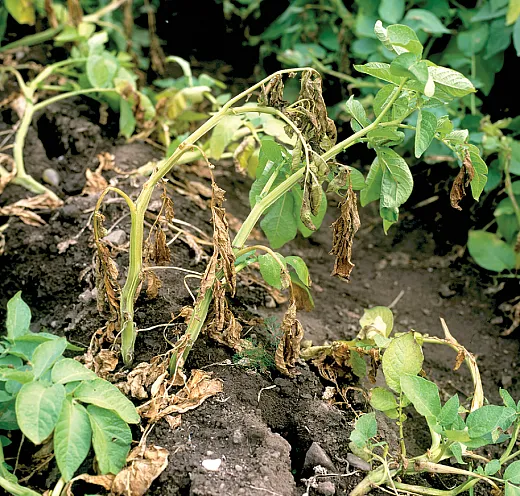
Both are migratory endoparasites that tunnel inside and feed on roots, but they also can move back into soil and into new roots. Pratylenchus neglectus doesn’t necessarily cause tuber damage, but it can reduce overall plant vigor and yields. Of greater concern, Hafez says, is its interaction with Verticillium dahliae, the fungal pathogen responsible for potato early dying complex.
Marked by premature vine senescence, potato early dying can reduce tuber yield by up to 50% under severe conditions. Even in the absence of lesion nematode, Verticillium dahliae can cause potato early dying. But co‐infection with high populations of P. neglectus typically increases the incidence and severity of the disease.
Unfortunately, Hafez says, V. dahliae has a microsclerotia stage that can remain dormant in the soil for prolonged periods, surviving high and low temperatures and dry conditions. When moisture and host plant roots are present, the microsclerotia produce hyphae, or vegetative growth structures, that infect the roots. Root‐lesion nematodes also have a wide host range that includes both broadleaf plants and grasses.
These characteristics greatly reduce rotational options although planting biofumigant brassica cover crops has proven to significantly reduce root‐lesion nematodes as well as Verticillium populations.
Stubby‐Root Nematode and Tobacco Rattle Virus
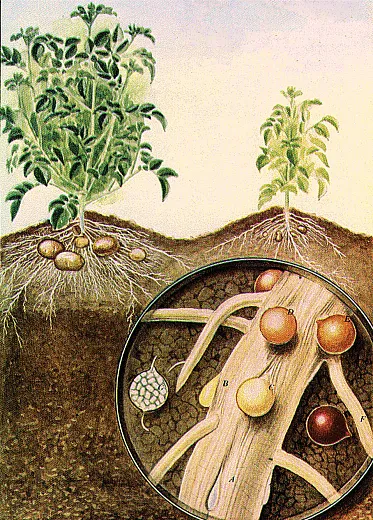
While stubby‐root nematodes don’t necessarily cause economic tuber damage by themselves, they can vector tobacco rattle virus (TRV), the causal agent of corky ringspot disease.
“And that’s a major problem,” Hafez says.
As its name implies, corky ringspot produces internal dark brown corky necrotic areas considered quality defects within potato tubers. Depending on the size of the corky defect, tubers may be downgraded to culls. Under severe infections, up to 50% of the crop may be rejected as unmarketable.
Of the three stubby‐root species reported in the PNW, Paratrichodorus allius is the most common and is present in about 30% of soil samples, according to a February 2019 Northwest Potato Research Consortium report. Based on 2018 surveys, it is the third most common plant‐parasitic nematode, following root‐knot and root‐lesion nematodes.
In Idaho, stubby‐root nematodes have been found on about 60,000 acres of lighter soils in the Burley and Twin Falls regions although they are starting to move westward, Hafez says. Stubby‐root nematodes are ectoparasites, living entirely in the soil and feeding on root tips.
Complicating management of the disease complex is that TRV has one of the broadest host ranges of any virus. It can remain dormant in weeds for years, reappearing when potatoes are planted again. Among symptomless weed hosts are hairy nightshade, redroot pigweed, green foxtail, broadleaf plaintain, wild lettuce, sunflower, and purslane.
Field trials have shown growing alfalfa in TRV‐infested fields can reduce virus levels over time as long as host weeds are carefully managed.
Resistant or tolerant potato varieties are another management tool. After being grown in a heavily TRV‐infested field as part of a trial, Castle Russet from the Tri‐State Potato Breeding Program had no internal symptoms and tested negative for the virus, according to the February 2019 Northwest Potato Research Consortium report. Susceptible cultivars in the same trial had severely necrotic tubers.
Pale Cyst Nematode
The pale cyst nematode, sometimes called the white cyst nematode, is considered a major potato pest worldwide. It also belongs to the Globodera genus, commonly known as potato cyst nematodes. Left uncontrolled, potato cyst nematodes can cause up to 80% yield loss, according to USDA figures.

In addition, potato cyst nematodes can potentially disrupt export markets as trading partners may cut off U.S. imports if eradication efforts are discontinued, says University of Idaho’s Dandurand.
Pale cyst nematodes are sedentary endoparasites. Like other cyst nematodes, they can survive for prolonged periods in the soil as eggs in dead bodies of females. Even in the absence of potatoes, viable cysts may remain in soil for years.
During a routine survey in 2006, pale cyst nematode was discovered in tare dirt at a Blackfoot, ID, processing facility. Additional sampling led to confirmation of the pest in a 45‐acre field in northern Bingham County, Idaho. Because of its potential to disrupt domestic as well as international trade, the USDA quickly enacted a quarantine that regulated host plant material and other agricultural practices that could potentially spread the pest.
Currently, 6,353 acres in northern Bingham County and southern Bonneville County are regulated, according to a February USDA report. Of those, 3,542 acres are infested fields and 2,993 acres are associated fields.
As part of the quarantine, the USDA—with input from university experts—developed best management practices. Among those are sanitizing equipment, using only certified seed, rotating to non‐host crops, preventing reuse of bags and bins, minimizing human foot traffic, and planting cover crops to reduce wind‐and rain‐driven nematode spread.
Know Thy Enemy
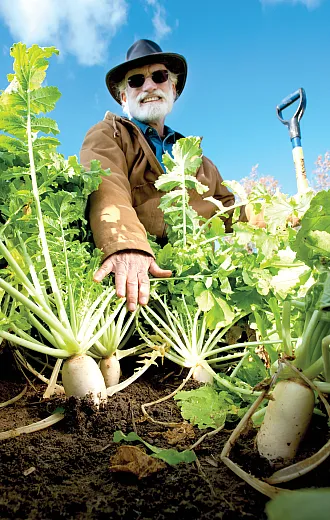
As with any integrated pest management program, identifying pests is key to developing a plan. Soil sampling and laboratory assays provide that insight into nematode species as well as population size.
“You have to know what you have first before you talk about management or control,” Hafez says. “That’s why sampling is very critical.”
Soil sampling is best conducted in late summer or early fall when nematode populations typically are higher and are still active in the top soil layer, he says. This timeframe also takes advantage of optimum soil temperatures and pests’ most susceptible stages, increases nematicide exposure times, and minimizes fumigant residues that may be phytotoxic at planting.
It’s important to know, however, that lab results are only as good as the procedures followed in collecting samples and caring for them afterward. As a founder of the university’s Nematode Diagnostic Laboratory in Parma, Hafez says the facility has grown since 1982. It currently is the largest testing facility of its type in the Northwest and receives samples from 17 different states.
He recommends sampling every year even if you don’t think you have nematodes because they could have unknowingly hitchhiked in on equipment or seed or be transported into fields via irrigation water. Even with that, Hafez says, some growers follow with an at‐planting nematicide and two additional in‐season applications of products, such as Velum Prime, Movento HL, or Vidate C‐LV, to keep nematode populations in check.
Biofumigation Using Green Manures
With increasing costs and decreasing availability of conventional fumigants, some PNW potato growers have turned to biofumigation using specific brassicas. In a number of cases, they have transitioned entirely to green manures and have shrunk their potato rotation to once every two years.
But biofumigation is not a total fumigant replacement if Columbia root‐knot nematodes are present because of their reproductive potential, says Andrew McGuire, an agronomist with Washington State University’s Center for Sustaining Agriculture and Natural Resources in Moses Lake.
“Even if you start the potato‐growing season with very low levels in the soil, [Columbia root‐not nematodes] can reproduce to where you get your whole crop rejected by the time it goes to harvest,” McGuire says. “Growers with Columbia root‐knot nematodes will knock them down with green manures, then fumigate because the green manures are not taking them down far enough to reduce the risks.”
He says certain green manure crops also have proven effective in suppressing diseases, including potato early dying.
Biofumigation involves flail‐chopping and promptly disking brassica crops into the soil, which causes cellular disruption and enzymatic hydrolysis of glucosinates found in the plant tissue. This releases isothiocynate, a volatile compound related to metam sodium breakdown products.
Because glucosinate and hydrolysis levels vary among species, not all brassicas are suited to biofumigation. The most commonly used belong to the genera Brassica, Raphanus, Sinapis and Eruca. In addition to containing glucosinolates, some Sinapsis and Eruca species also can act as trap crops, allowing some nematode species to infect the roots while limiting their development.
By keeping nematodes in the top soil layer during winter when they’d normally move deeper, the trap crops help improve preplant fumigation efficacy, McGuire says.
But biofumigant cover crops also come with challenges. To achieve maximum biomass potential, they must be planted in July or August, he says. Only two PNW rotational crops, wheat and green peas, are harvested early enough to allow that.
The covers also require 100 to 110 lb of nitrogen—an added input cost—to maximize biomass production, and the seed itself is not cheap. In addition, McGuire says, biomass production varies among years based on fall temperatures.
“The other thing is you’re growing it in August and September, and that’s when you’re harvesting potatoes,” he says. “It overlaps with the harvest of other crops, which take priority.”
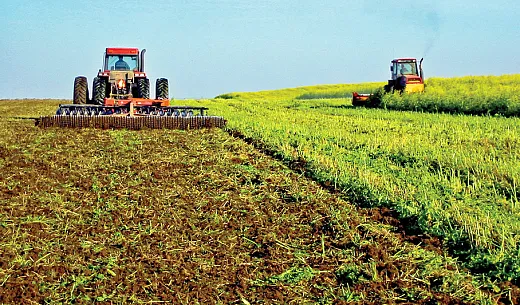
And because cover crops are planted after wheat, growers risk having volunteer wheat plants that can outcompete mustards and serve as nematode hosts. As a result, they typically apply a selective herbicide, another added cost.
But McGuire says biofumigant crops also provide potential benefits beyond nematode and disease management, including increasing soil organic matter.
“I think most growers started using them because of the disease suppression benefits,” he says, citing grower conversations and focus groups. “But when they used them, especially more than once on the same field, they started seeing improvements particularly with soil tilth. That’s why they continue using them. They’re not a cheap crop to grow, but it’s a combination of benefits.”
“Even if you start the potato-growing season with very low levels in the soil, [Columbia root-not nematodes] can reproduce to where you get your whole crop rejected by the time it goes to harvest.”
Self-Study CEU Quiz
Earn 1 CEU in Integrated Pest Management by taking the quiz. For your convenience, the quiz is printed below. The CEU can be purchased individually, or you can access as part of your Online Classroom Subscription.
- Why aren’t potato farmers in the Pacific Northwest (PNW) using Telone II to protect against nematodes?
- It’s no longer as effective.
- It’s too expensive.
- It has been banned.
- Supply chain issues.
- Weed management is critical for nematode control because many weeds are suitable nematode hosts.
- True.
- False.
- Approximately what percentage of Idaho potato fields are estimated to have Pratylenchus neglectus?
- 55%.
- 65%.
- 75%.
- 95%.
- Which fungal pathogen causes potato early dying complex?
- Verticillium dahlia.
- Globodera rostochiensis.
- Alternaria solani.
- Colletotrichum coccodes.
- Stubby-root nematodes can vector tobacco rattle virus (TRV), which in turn causes what problem?
- Corky ringspot disease.
- Early blight.
- Black scurf.
- Brown rot.
- What potato has been found to be resistant to TRV?
- Castle Russet.
- Palisade Russet.
- Sage Russet.
- Yukon Nugget.
- Potatoes across more than 6,000 acres in two eastern Idaho counties are currently regulated due to the presence of what nematode?
- Root-knot nematodes.
- Pale cyst nematodes.
- Golden nematodes.
- Stubby-root nematodes.
- Which management practice is used in the area of Idaho that is regulated to control the nematodes?
- Rotating to non-host crops.
- Sanitizing equipment.
- Minimizing human foot traffic.
- All of the above.
- When is the best time to sample the soil for nematodes?
- Late summer.
- Late spring or early summer.
- Late summer or early fall.
- Early spring.
- If you don’t currently have nematodes, how often should you sample for them?
- Every year.
- Every two years.
- Every three years.
- Every four years.
Text © . The authors. CC BY-NC-ND 4.0. Except where otherwise noted, images are subject to copyright. Any reuse without express permission from the copyright owner is prohibited.




